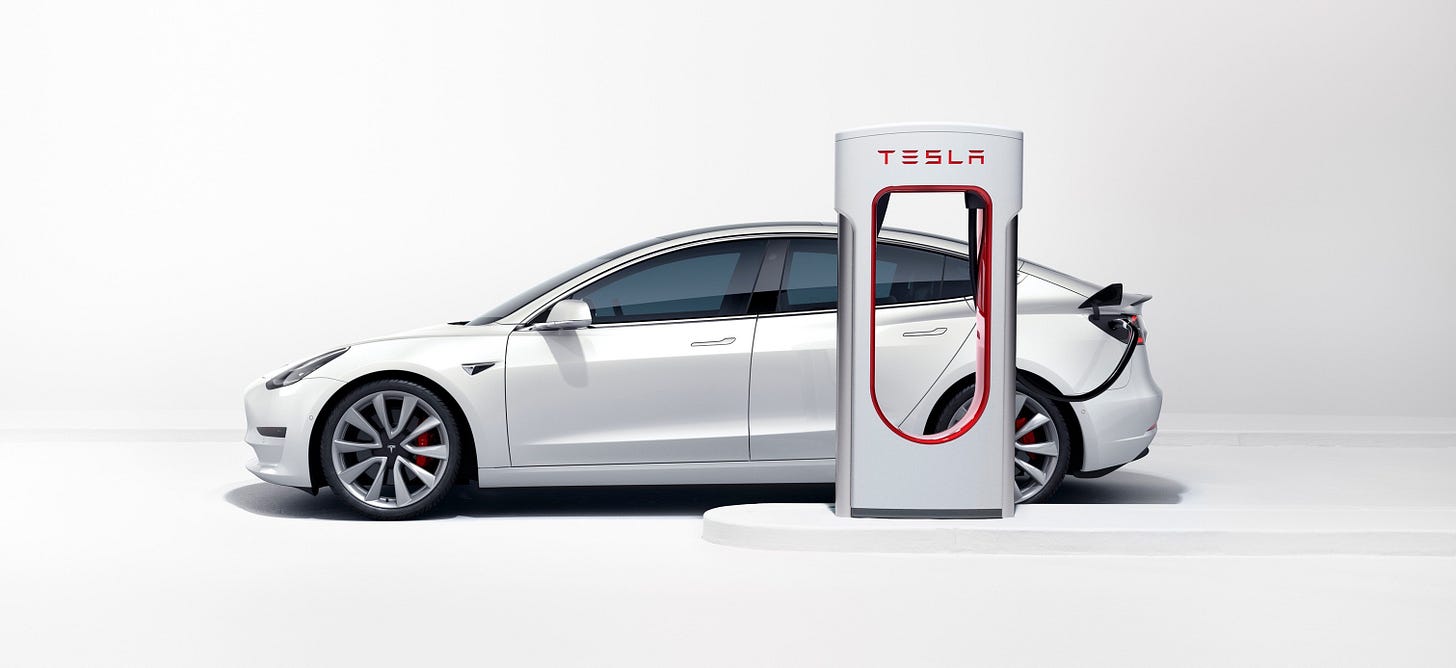
It's FREE! Take a moment to subscribe to Full Throttle which will be sent to your email inbox twice a week. I update during the week on Facebook, Instagram, Twitter, and LinkedIn.
A tidal wave of electric vehicles (EVs) is coming! You’ve undoubtedly heard the predictions. I’ve been traveling the past few weeks and have heard echoes and skepticism of those prognostications.
Here are just a few recent headlines:
-US lags in electric vehicle sales despite Biden administration’s push (Guardian)
-EV Sales Growing, but Price, Range Hold Some Shoppers Back (Kelley Blue Book)
-The Electric Vehicle Invasion Is Already Here (Bloomberg)
All are true.
As 2021 comes to an end, let’s look at some of the facts and what some automaker CEOs are saying.
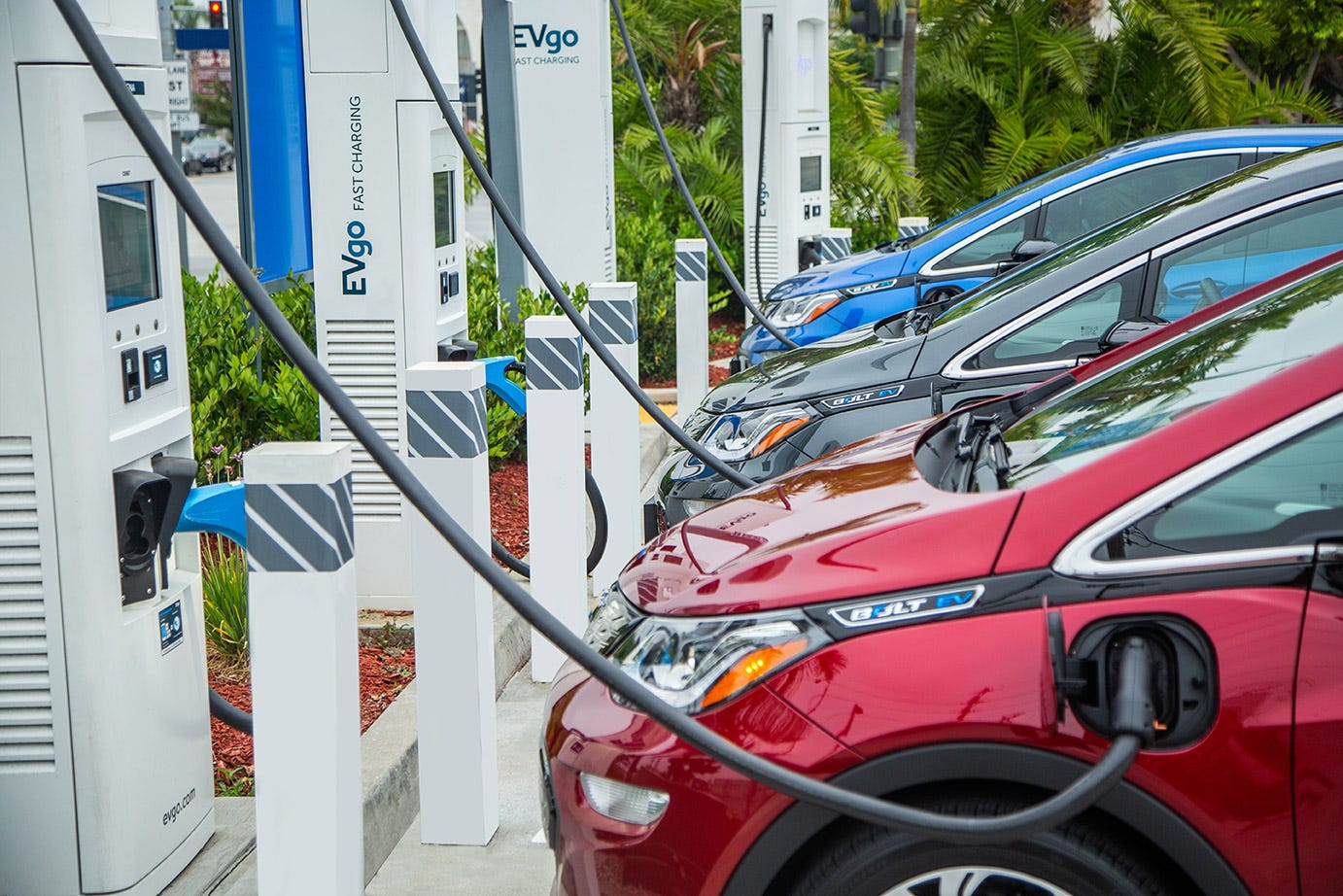
(Credit: GM)
EV global sales are expected to hit 5.6 million units by the end of the year. That number is about 80% higher than last year. EV sales around the world now account for about 7% of all vehicle sales. That number is expected to increase nearly sevenfold by the end of this decade. BloombergNEF research also shows that it is not the US leading this dramatic growth, but rather China and Europe. Germany will lead the world, on a percentage basis, in EV sales, reaching 40% in just four more years, according to Bloomberg.
STILL SMALL PERCENTAGE
Sales of EVs in the US have doubled. But that is still only 3-4% (about half the global rate) of all vehicle sales. The US is lagging, as the headline above suggests. Twice as many EVs were sold this year in Europe versus the US.
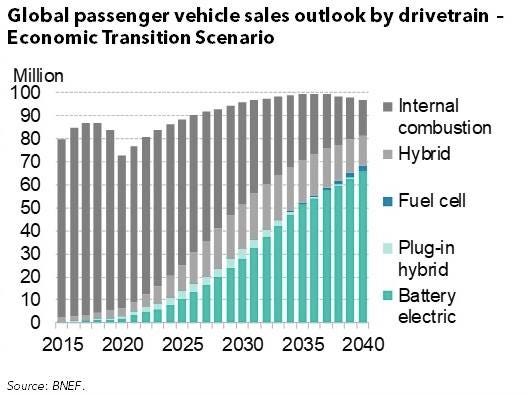
Projected growth of EVs through 2040. (Credit: BloombergNEF)
The electrification evolution is being driven principally by consumer demand and government mandates. The US has been bipolar on government mandates. Obama went one way, Trump went the other and now Biden is back to incentives and subsidies to power what he sees as a way to battle climate change and create more jobs. “The government's aim for EVs to make up 50% of new sales by 2030 seems challenging, but large car makers have even bolder ambitions beyond this decade,” says ING Capital in a recent report.
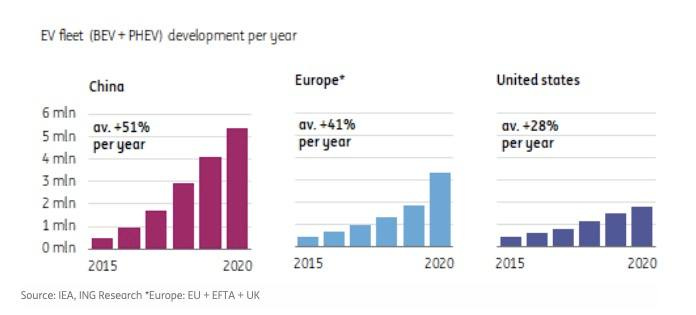
RACE TO ELECTRIFY
The automakers saw the writing on the wall long ago and have been proclaiming how quickly they will become all-electric manufacturers. Just last week, Mercedes-Daimler’s Board approved a plan to go fully electric. Daimler committed $60 billion euros to further its goal of, “technological leadership in the automotive luxury segment,” said Ola Källenius, CEO of Daimler AG and Mercedes-Benz AG.
Ford’s CEO Jim Farley put a stake in the ground too, saying he wants the US company to be the second-largest EV maker behind Tesla. Farley has been surprised by the interest in the company’s Mach E and F-150 electric truck. The demand is "so much higher,” than expected, he told Automotive News.
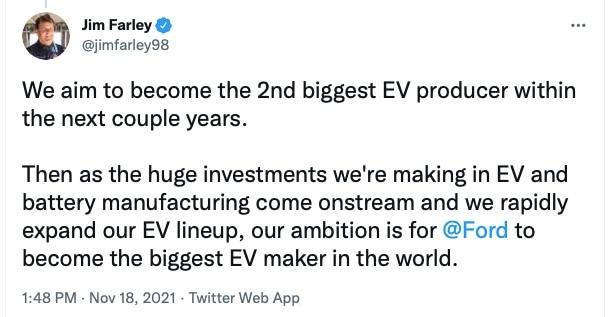
Tesla has led the world in the move to EVs but it’s feeling the competition. In spring of 2020 Tesla garnered 79% of all new EV registrations in the US. A year later, according to Experian, that number dropped to 66% as other automakers moved more EV units into the market.
CUSTOMER ADOPTION
There is growing US demand, but with some hesitations among American drivers. An anti-gasoline nonprofit, Coltura, conducted a poll that it says found more than half of US voters, “support requiring all new cars sold in their state to be electric starting in 2030.” However, that doesn’t mean a majority of drivers are ready to buy an EV. Cox Automotive found that there are serious concerns about batteries, chargers, range, and price.
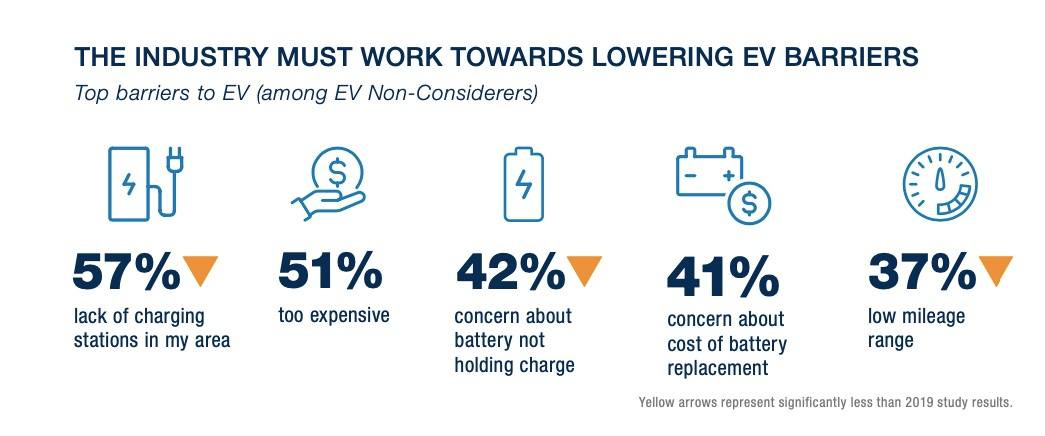
(Credit: Cox Automotive)
The numbers don’t lie. The tidal wave is coming and automakers are scrambling and spending to catch the wave. Governments are helping and so is the scale of production that helps lower vehicle cost. As ING Capital said in its report, “a combination of regulatory support with a wider range of affordable models could lead to an acceleration in EV sales in the second half of the decade.”
Get ready for the wave.
(Cover photo credit: Tesla)




